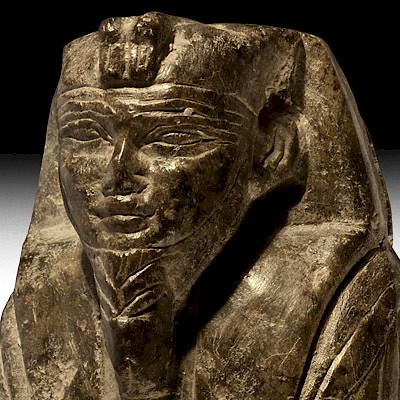Byzantine Censer with Figural Scenes
Lot 640
About Seller
TimeLine Auctions Limited
The Court House, 363 Main Road
Harwick, Essex CO12 4DN
United Kingdom
Estimate:
GBP£1,000 - GBP£1,400
$1,265.82 - $1,772.15
Absentee vs Live bid
Two ways to bid:
- Leave a max absentee bid and the platform will bid on your behalf up to your maximum bid during the live auction.
- Bid live during the auction and your bids will be submitted real-time to the auctioneer.
Bid Increments
| Price | Bid Increment |
|---|---|
| GBP£0 | GBP£5 |
| GBP£100 | GBP£10 |
| GBP£200 | GBP£20 |
| GBP£500 | GBP£50 |
| GBP£1,000 | GBP£100 |
| GBP£2,000 | GBP£200 |
| GBP£5,000 | GBP£500 |
| GBP£10,000 | GBP£1,000 |
| GBP£20,000 | GBP£2,000 |
| GBP£50,000 | GBP£5,000 |
| GBP£100,000 | GBP£10,000 |
| GBP£250,000 | GBP£20,000 |
About Auction
By TimeLine Auctions Limited
Feb 26, 2019
Set Reminder
2019-02-26 05:00:00
2019-02-26 05:00:00
America/New_York
Bidsquare
Bidsquare : TimeLine Auctions - Antiquities Sale - Day 1
https://www.bidsquare.com/auctions/timeline-auctions-limited/timeline-auctions---antiquities-sale---day-1-3821
Auction Venue: The May Fair Hotel London Stratton Street Mayfair London, W1J 8LT Viewing from noon Monday 25th February 2019 Champagne Reception: 6pm - 9pm Tuesday 26th February 2019 (Day 1) 10am : Lots 1 - 660 TimeLine Auctions Limited enquiries@timelineauctions.com
Auction Venue: The May Fair Hotel London Stratton Street Mayfair London, W1J 8LT Viewing from noon Monday 25th February 2019 Champagne Reception: 6pm - 9pm Tuesday 26th February 2019 (Day 1) 10am : Lots 1 - 660 TimeLine Auctions Limited enquiries@timelineauctions.com
- Lot Description
6th-7th century AD. A bronze censer with bulbous body resting on a flared foot; three suspension loops to the rim; band with incised floral design to the neck and foot, rosette to the underside of the foot; to the body, high relief vignettes from the life of Christ depicting: the Annunciation, the Nativity, the Baptism, the Crucifixion and the Women at the Tomb. This is an unusual type of censer, part of a group of approximately one hundred of this type known in Museums and private collections; cf. The Fogg Museum, Harvard Art Museums, 1975.41.140; Virginia Museum of Fine Arts, 67.27 for type; Exhibition catalogue, Sinai, Byzantium, Russia: Orthodox Art from the 6th-12th Century, Hermitage Museum and Courtauld Gallery, 2000, no.B35a; also R. Baumstark, Rom and Byzanz. Schatzkammerstucke aus bayerischen Sammulugen, Munich, 19998, no.30; and Exhibition catalogue, Cradle of Christianity, Israel Museum, Jerusalem, p.44. 630 grams, 9.5cm (3 3/4"). Property of a gentleman; from a Mayfair, London, UK, gallery. In the Byzantine world, censers were used to burn incense in both domestic contexts to purify the home, protecting it from malevolent forces, and in liturgical ceremonies. Censers depicting scenes from the life of Christ have been found across the Byzantine world in Egypt, Syria and Turkey. This censer could have been used within liturgical ceremonies or for worship within a family home.Fine condition.
Condition
- Shipping Info
-
Buyer Pays Shipping Costs
-
- Buyer's Premium



 EUR
EUR CAD
CAD AUD
AUD GBP
GBP MXN
MXN HKD
HKD CNY
CNY MYR
MYR SEK
SEK SGD
SGD CHF
CHF THB
THB



